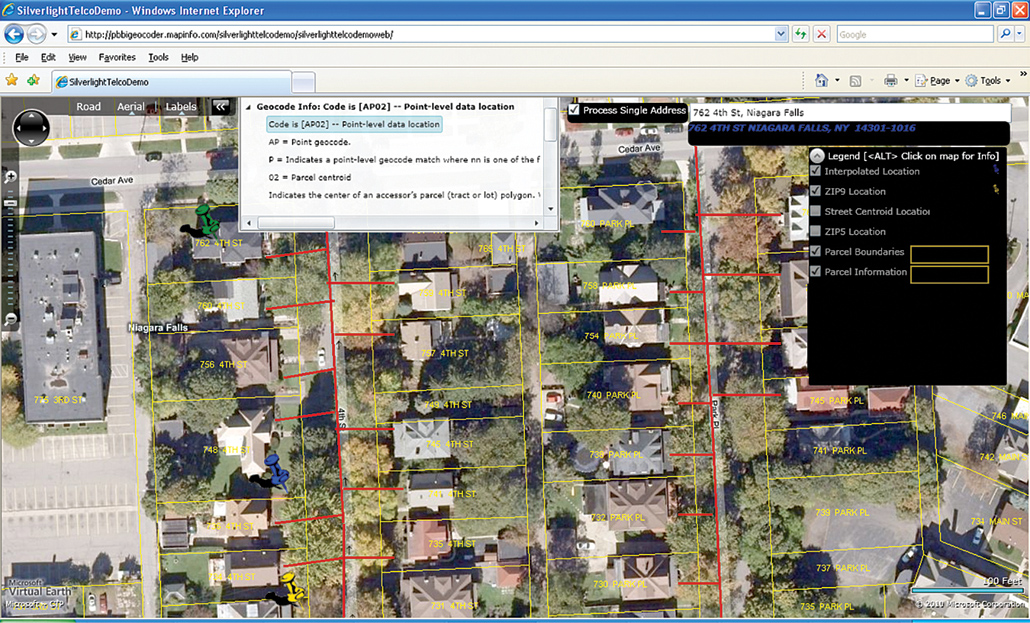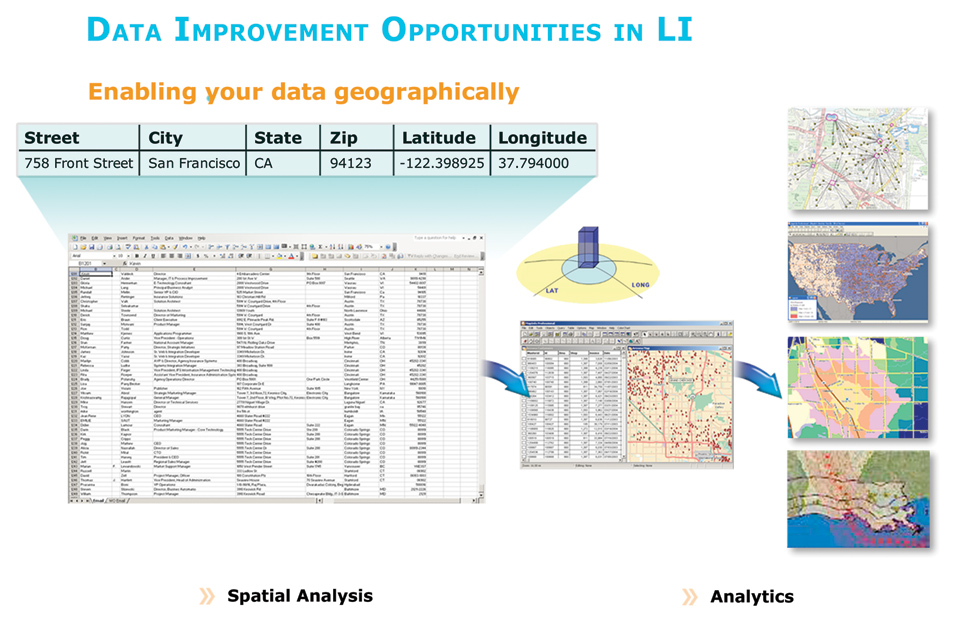Utilities are increasing investment in Smart Grid technologies and smart metering projects as a result of the rising demand for electricity (particularly in developing economies), aging T&D infrastructure in developed countries, emissions and climate change mandates, and the need for real-time visibility of energy supply and demand to optimize both service reliability and cost. Government regulations and incentives are contributing to this rising investment and interest in alternative energy sources and Smart Grid infrastructure in numerous countries around the globe. The Provincial Government of Ontario Canada has targeted the end of 2010 to deploy smart meters in all businesses and households throughout the province.

Jeremy Peters
Solution Architect
The Smart Grid is concerned with optimizing the performance and management of electric transmission and distribution networks to improve reliability, reduce costs, drive energy efficiency, promote energy-saving choices for consumers and foster the growth of renewable energy sources. The Smart Grid is made up of many technologies working together in an integrated enterprise utility solution with location-based technologies playing a key role. Technologies such as smart meters, integrated communications, sensors, distribution management, Supervisory control and data acquisition (SCADA) and advanced metering infrastructure (AMI), among others, make up the Smart Grid.
Customer relationship management (CRM) solutions help utilities perform critical tasks related to the acquisition, development, service and retention of their customers. The early effective adoption of location intelligence in advanced CRM solutions by utilities will play an important role in the successful implementation of the Smart Grid. Location intelligence in Smart Grid solutions will provide real-time decision support systems able to analyze the network, determine the current state and condition of the system, predict what may happen, and respond accordingly in order to effectively communicate the state of the system from the sensor network to both the utility and the customers. The adoption of location intelligence in advanced CRM solutions will help ensure a better level of service using smart grid technologies and reduce cost-to-serve by:
- Providing a standardized and validated enterprise-wide view of customer information with accurate customer locations in relation to the electric utility system
- Maintaining true spatial accuracy, alignment and integrity between the spatial referenced data overlays such as land base data, network data and customer data
- Geographically visualize and understand the electric utility system’s relationships, connections and patterns
- Monitoring the real-time status of the grid on an interactive map and highlighting where the system status is changing
- Providing Enterprise Risk Management and real-time analytics for system restoration, storm tracking and security monitoring
- Enhancing market-driven network planning with spatial analysis to help determine the most cost-effective and profitable design of the Smart Grid
- Increasing the efficiency of customer service provisioning and activation
Enterprise wide view of customers with accurate customer locations
A consistent, single view of a utility’s customers across the enterprise with accurate and complete customer information is crucial to effective customer relationship management. Poor quality customer addresses can be costly and will affect billing and cash flow, service delivery and customer relationships. An address quality system is needed to accurately locate customers geographically and in relation to the electric network in order to accurately represent those customers as connections to the Smart Grid. Only then can the Smart Grid optimize the automation of system management and restoration to improve reliability, reduce costs, drive energy efficiency and empower consumers.
Address cleansing and geocoding (assigning a latitude and longitude to an address) technologies enables customer service representatives to execute address validation, postal certification, standardization, correction and geocoding in a batch and/or real-time environment as data is being entered into customer care and billing systems. Advanced geocoding technologies now use address point interpolation to improve upon regular street segment interpolation by inserting point data. When an address point user dictionary is present an address can be geocoded at the correct property location as opposed to the approximate location on a street segment. Property records and accurate parcel boundary definitions provide important ownership information and the accurate geographical representation of the connection between the customer and the electric network.

An accurate point level geocode of a customer’s address is represented by the green push pin on the map, along with property boundaries, and connectivity to the Smart Grid network.
Data entry errors by both employees and customers, along with inconsistencies, contribute to a utility’s data quality problems. Data problems include: poor quality, reconciliation, reporting compatibility, confidence, and accuracy and reliability issues. Data quality also plays an important role in service optimization, network planning, customer service and operations. Location Intelligence is a key component in many utility providers’ enterprise information management (EIM) strategies. Utilities must have an enterprise data quality system that enables them to leverage the most up-to-date, accurate and complete view of customers across the organization. Effective quality assurance processes include five best practices:
- Data Profiling
- Data Governance
- Back-End Cleanup
- Interactive Processes
- Maintenance
Customer data quality/data integration technologies improve the completeness, validity, consistency, timeliness and accuracy of customer data by enabling these best practices. Customer data quality leverages capabilities such as – name parsing, name standardization, and name validation, unique entity identification, address cleansing, geocoding, data consolidation, geography code assignment and tax jurisdiction assignment. Some of these advanced enterprise data quality systems are based on a service-oriented architecture (SOA) and provide a graphic rule editor interface so that you don’t have to write any code to customize businesses processes to a utility’s specific needs. Ensuring that customer data is accurate, complete, and up to date enables utilities to better understand their customers, provide a better level of service and reduce cost-to-serve.
Maintain true spatial accuracy, alignment and integrity between land base, network facility and customer data
For use in a Smart Grid system that automatically controls the electric distribution system, utilities must maintain true spatial accuracy, alignment and integrity between spatial referenced data overlays such as land base, network facility and customer data.
Powerful location intelligence/GIS software enables utilities to the map out the accurate location of network assets in relation to a land base and customers through their completed engineering life-cycle model, from point of conception to retirement.
A spatial data management system is needed to store, manage and serve the geographic objects and all the historic and real-time data about the system assets from Smart Grid meters and sensors. A spatial data management system is a core component of a location information system (LIS). Utilities can effectively optimize core Smart Grid components when their network assets are accurately mapped, stored and maintained.
Geographically visualize and understand the relationships, connections and patterns in the electric utility system
The LIS is the source for network asset and land-base geographic information and is integrated into other core utility systems, such as outage management, distribution management, work force management, customer service, enterprise asset management (EAM), network planning, advanced metering infrastructure (AMI) enabled billing and CRM. The LIS mapping and spatial analysis capabilities are accessed using desktop applications, Web-based applications and mobile device applications via secure client-user interfaces. Web 2.0 geospatial “mashup” map tiling frameworks, such as PBBI Stratus, Microsoft Bing Maps, Google Earth are among the latest implementation frameworks that can be used to provide basic capabilities to view, analyze and manage geographically based network asset and customer information and the relationships that exist between them.

View, analyze and manage geographically based customer and Smart Grid asset information to support operational decisions and reduce cost-to-serve
More powerful geospatial capabilities can be integrated into these frameworks from LIS/GIS platforms. These platforms provide the ability to fully illustrate and analyze the relationships, connections and patterns in the Smart Grid, thereby enabling utility leaders to make better planning and operational decisions for their customers. These capabilities provide a powerful means for visualizing and analyzing the spatio-temporal trends of the Smart Grid system metrics over time. Some of the key characteristics of these Web 2.0 geospatial solutions include:
- Desktop user experience over the Web using technologies such as Flash, Silverlight and JavaScript, OpenLayers, Mash-Ups and Ajax for partial-page updates
- Map tiling to enable caching land base and network assets for superior map display performance and interactivity
- Flexible standards-based location intelligence Web services SOA architecture
- Flexible map tiling frameworks client side JavaScript programming APIs that enable quick and easy integration of rich web-based geographic capabilities into client applications
- Accurate and aesthetically appealing land-base maps with easy data refreshes including hundreds of terabytes of aerial and satellite imagery for better spatial context
Monitor the real-time status of the grid on an interactive map and highlighting where the system status is changing
The Smart Grid can enable a more advanced, integrated outage management system and distribution management system (OMS/DMS) to analyze and optimize the network and identify, respond to and resolve power outages quickly and with significantly less impact to customers.
Integrating advanced technologies, such as location intelligence and automated meter reading (AMR) with OMS/DMS and workforce management systems can enable the automatic pinging of customer meters to quickly detect if and where there is an outage to significantly improve outage response times and to enhance customer service. Location intelligence linear referencing and dynamic segmentation capabilities, found in some Web-based mapping application development tools and solutions, can be used to determine the location of a fault more accurately by measuring the optical distance along the fiber.
These capabilities can also be used to better monitor and analyze assets, conditions and events that exist along network. Such a system can show a real-time view of location dependent critical network elements on an interactive map and automatically highlight where things are changing in order to communicate real-time network status, network quality, and trouble tickets to service and support representatives across the organization.
Utilities will be able to make better decisions based on easily visualized, actionable intelligence from the sensor network and the smart meters about outages, restoration, load, events, voltage, current, equipment failures and other potential issues detected along the distribution network. Using location intelligence capabilities, the entire network and its status can be viewed at any moment to instantly see developing problems, locate the nearest repair crew and reroute them to exactly where the outage is located.
Enterprise risk management and real-time analytics for system restoration, storm tracking, and security monitoring
The DMS will provide the automated engine to analyze and optimize the distribution network using location intelligence. The Smart Grid will optimize distribution based on easily visualized, actionable information from thousands of sensors and the smart meters after an abnormal event to prevent equipment failure and outages. The Smart Grid will also take preventive measures to mitigate risk based on current and historical intelligence about load and the condition of network components, such as transformers. Smart Grid algorithms that incorporate spatial analysis will be part of a decision support system that can help determine risk, customer impact and recommend preventative measures.
Electric utility providers also need to assess, understand and mitigate many other different types of risk, such as weather, crime, terrorism, political, financial and regulatory related risk.
Utilities can view weather occurrences in real time in conjunction with their network assets, their customers, and their repair crews and supplies to see what is actually happening at their asset locations by integrating real-time WMS Web service weather feeds into their LIS capable OMS/DMS. Real-time and projected hurricane paths can be mapped and analyzed to show the probability and estimated magnitude of the hurricane in relation to the electric system and their customers. This allows utilities to make better decisions regarding the management of both large-scale and localized weather disruptions.
Data on both historic and current weather, wild fires and earthquakes, as well as political and crime risk is also available for enterprise risk analysis. This data can be analyzed using location intelligence for long-term planning to better understand potential risk. Historic risk data allows electric utility providers to better understand the potential for loss or interruption based on knowledge of wild fires, earthquake fault lines and zones, as well as historic weather data on the location of previous hurricanes, hail storms, wind events and tornados.
Crime risk data can be analyzed to locate the safest areas for company assets and to ensure employee safety and security. Using location intelligence, electric utility providers can access data that models the risk of terrorism to create action plans or establish “what-if” contingency plans. Access to such vital data helps providers make important decisions to:
- Re-allocate assets/resources, control liabilities, secure network infrastructures to prevent potential outages
- Establish priorities for service restoration
- Determine optimal locations for new assets to minimize structural and employee risk
Using spatial analysis to enhance market driven network planning
Location Intelligence provides the tools to help determine the most cost-effective and profitable design of the Smart Grid by modeling alternative builds-out as driven by customer needs. Utilities will need LI to determine the optimal location for Smart Grid components, such as, new communication backbones, repeaters and sensors. Location Intelligence provides an effective means to help see where network investments are needed and determine how much capital is required for build-outs because optimization depends heavily on the relationships between existing location based infrastructure, customers, land base and environmental factors.
Conclusion
Location intelligence in Smart Grid solutions will provide real-time decision support systems able to help utilities plan, manage, predict and make decisions with greater accuracy, efficiency and reduced cost. In the end, location-based technologies will help utilities unlock the value of facility, land-base, customer and environment data to enable the Smart Grid, help ensure a better level of service and build profitable customer relationships.
About the Author
Jeremy Peters is a Solution Architect with Pitney Bowes Business Insight’s Global Services team. He has over 14 years of experience in professional services as developer, analyst and architect, specializing in the application of GIS technologies for customers across various industries. His background includes experience with a wide range of technologies, methodologies and applications in a variety of operating environments.







